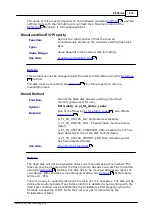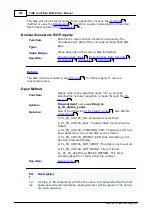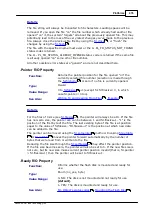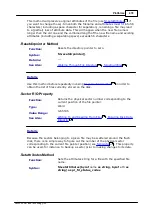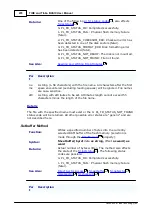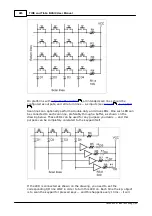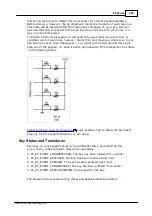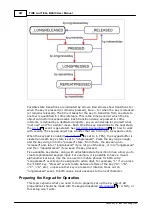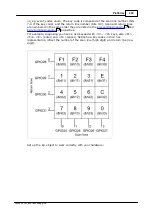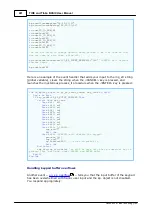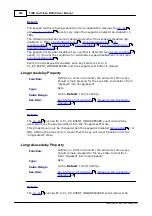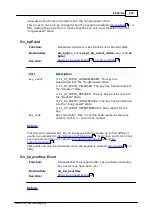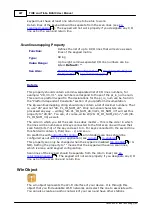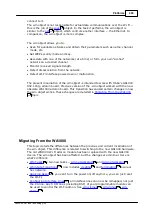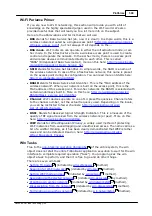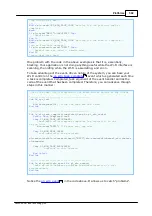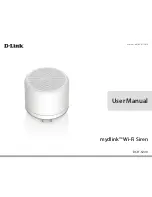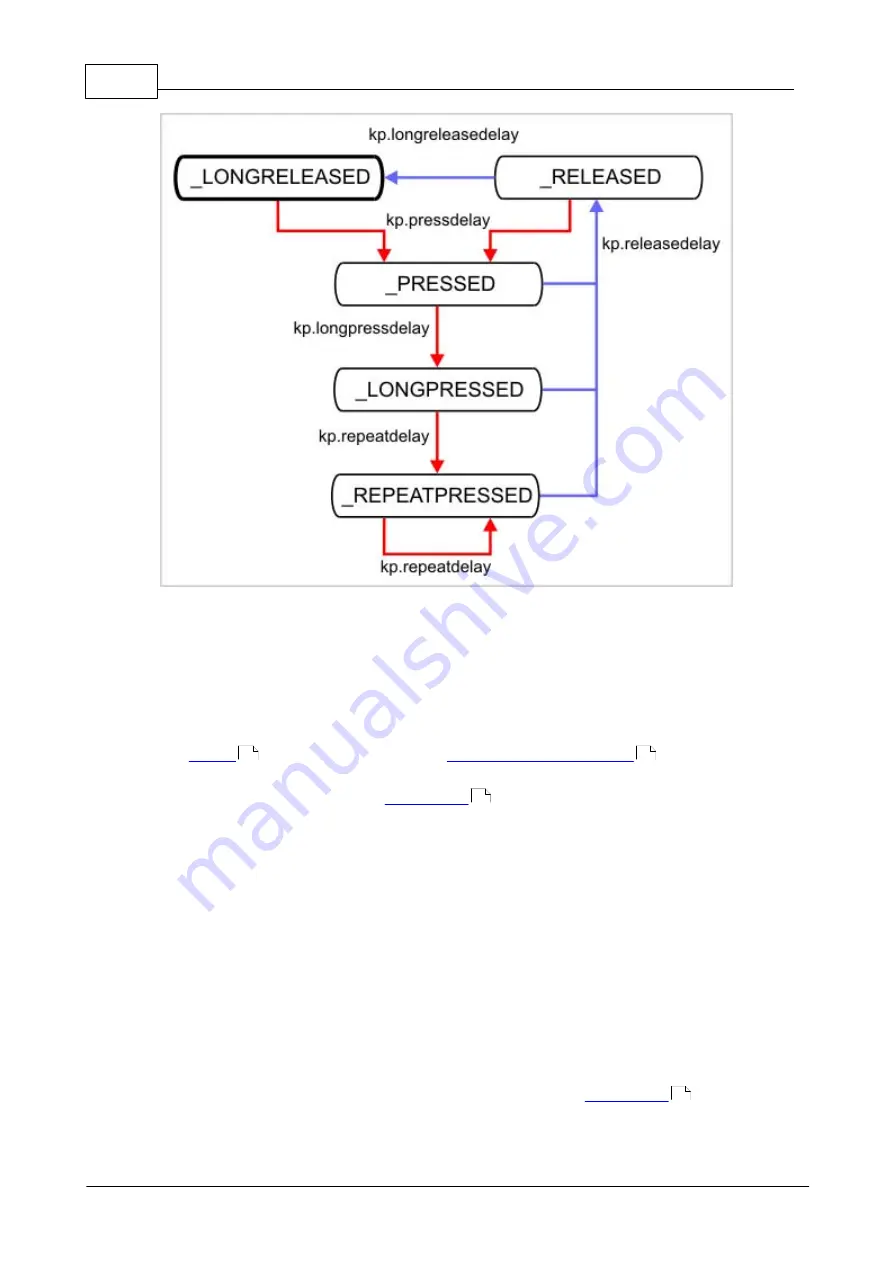
487
TIDE and Tibbo BASIC User Manual
©2000-2008 Tibbo Technology Inc.
Possible state transitions are indicated by arrows. Red arrows show transitions for
when the key is pressed (or remains pressed), blue -- for when the key is released
(or remains released). The time it takes for the key to transition from one state to
another is quantified in 10ms intervals. This is the time period at which the kp.
object will perform keypad scans. Each transition delay, expressed in 10ms
intervals, is defined by a dedicated property, so you can decide for yourself what
"just now" and "for a while" mean. Each time the key transitions to the next state,
the
for how to work
with events. The keypad object has a buffer that can hold up to 8 keypad events.
When the keypad is enabled (
is set to 1- YES), the keypad buffer is
cleared and each key's state is set to "longreleased". Press the key long enough,
and the key will go into the "pressed" state. From there, the key can go to
"released" and, later, "longreleased" if you let go of that key, or into "longpressed"
and then "repeatpressed" if you keep the key pressed.
Five available key states, along with adjustable state transition times, allow you to
create sophisticated keypad input. For example, it is possible to have a mixed
alphanumerical input, like the one used on mobile phones for SMS entry.
"Longpressed" events can be assigned to add a digit, for example, "1" if you press
the "1ABC" key. "Pressed" events rotate between letters of the key ("A"->"B"-
>"C"->"A", etc.), unless another key is pressed or rotation times out on
"longreleased" event. In both cases, input advances to the next character.
8.3.14.3
Preparing the Keypad for Operation
This topic explains what you need to do to property set up the kp. object. All
preparations should be made with the keypad disabled (
= 0- NO), or
this setup won't work.
494
489
492
492


